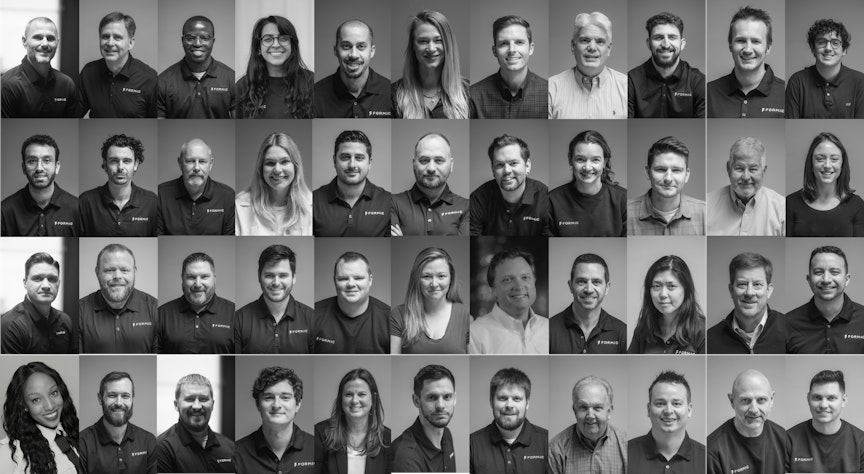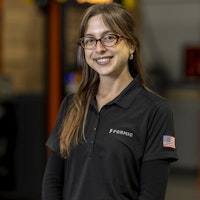Last week, in Vacaville, CA, Mariani Packing’s facility buzzed with conversation. Leaders from food, beverage, and CPG companies — including Lundberg Family Farms, Grower Direct Nut, Superior Farms, Straus Family Creamery, and Victor Packing — had gathered for a day of learning, touring, and open discussion about automation.
The event was part of the Formic Automation Community series, designed to give manufacturers a tangible view of what automation looks like in daily production, the challenges it solves, and the lessons learned from those already using it.
From Family Business to Industry Leader
The morning began with an overview of Mariani’s 115-year history, from its roots as a family-run dried fruit processor to its current position as one of the largest in the United States. Mariani’s Director, Jesus Ceja, set the tone for the day:
"The strongest asset that we have as a company is truly our people. You can have the best automation, the best process technology, but if we don’t use it and improve it daily, you won’t achieve your goals,” he said.
That people-first perspective framed the conversation: automation here wasn’t about replacing employees, but about protecting them, making their jobs safer, and keeping the business competitive in a changing market.
Why Automate Now, Not Later
Mariani’s leadership walked attendees through the four forces driving their automation strategy, why they went with Formic’s Full Service Automation, and why waiting to automate would have cost them more than acting:
1. Avoiding Heavy Capital Expenditure
Traditional automation often means tying up millions in CapEx. Mariani instead deployed Full Service Automation, preserving capital for other priorities.
"If you can execute automation without that requirement of upfront cash, that’s a huge benefit,” Ceja said.
2. Improving Safety and Ergonomics
With an aging workforce, repetitive manual palletizing had become both a safety concern and a productivity challenge.
"When you look at our injury accidents, a lot are related to the aging workforce. Automation had a huge impact to mitigate those injuries,” Ceja said.
3. Flexibility to Adapt
As throughput demands grew, Mariani swapped its original palletizing robot for a larger, more capable model at no extra cost.
"We started with a different robot, but it no longer met our capacity needs as we grew. This new system definitely fulfills all our needs,” Ceja said.
4. Relieving Maintenance Bottlenecks
In a million-square-foot facility supported by just two mechanics per shift, outsourcing automation maintenance freed critical resources.
"When you take automation maintenance off their plate, it’s a huge relief,” Ceja said.
Walking the Floor: Automation in Action
After the presentation, the crowd split into tour groups led by Ceja and two of Mariani’s Industrial Engineers. Donning safety glasses and hairnets, attendees stepped onto the bustling floor, where workers moved in rhythm with machines.
Attendees got a behind-the-scenes look at Formic’s robotic palletizers in action as they precisely stacking cases without the bending, twisting, and lifting that once caused strain and injury.
Tour guides pointed out how automation was integrated seamlessly into existing production line workflows, how operators could switch between manual and automated modes, and how new layouts allowed both people and machines to work efficiently side by side.
For many, the surprise wasn’t the technology itself, it was how seamlessly it fit into existing workflows without disrupting the human element.
The Panel: Real-World Automation
Back in the meeting room, the chairs were rearranged for a panel discussion featuring Mariani’s Ceja and Patrick Henson and Ruben Rangel from Rumiano Cheese (also a Formic customer).
The conversation began with a common question about getting started with automation: What initially made you hesitate to automate, and what ultimately convinced you to move forward?
Jesus shared that for Mariani, the turning point was realizing they could avoid large upfront capital costs: “It was about the CapEx we could utilize for other projects, the whole ergonomic safety piece, and also the maintenance support. We’re pretty lean on maintenance folks, so that was a big sale for us. And being able to do testing upfront was valuable proof automation was the path forward.”
Henson added that for Rumiano, capital wasn’t the only factor. They were looking for persistence, flexibility, and a team that listened. Rangel echoed that relationship fit was as important as the technology: “We want our vendors to communicate with us the way we communicate with our employees and customers. If we hold ourselves to certain standards, we expect our partners to do the same. Formic stood by what they said they’d do.”
The conversation shifted to getting your team on board with automation, which is a common concern for manufacturers who want to retain their team and maintain trust. Both companies addressed the fear among employees that automation might threaten jobs. Henson shared that at Rumiano, they started talking about automation years before installing anything.
“You’ve got to get in front of it. We told them this isn’t to make your lives harder, it’s to make them easier, and it’s about growth. People saw we were serious — that we were actually putting our money where our mouth was,” he said.
Rangel added that automation had opened opportunities for workers to upskill into new roles rather than be replaced.
Other questions from the audience sparked candid discussions, covering some other common questions when automating for the first time:
- What happens when technology fails?
- How did you decide what to automate first?
- How do you ensure automation investments stay relevant as needs change?
Panelists stressed building redundancy, starting with the easiest and most repetitive production line task to automate, and working with partners who can adapt alongside your business.
By the end of the discussion, the theme was clear: successful automation isn’t just about the machine, it’s about planning for people, processes, and the future.
Automation Is the Path Forward
As the day wound down, one message stood out: automation is no longer a “someday” project. The companies in the room, whether they were already automating or still exploring, saw clearly that the benefits compound over time, and waiting only increases the risk of falling behind.
"Automation is not a someday project. It’s a now project," said Joel Onyshuk, Formic’s VP of Sales, closing the session.
Guests left with more than just ideas. They left with a clearer picture of how automation could work in their own facilities, and how it could be achieved without massive capital spend, without overburdening internal teams, and without unnecessary risk.
Missed the event at Mariani? No problem. Get started on your automation journey by contacting us here.


